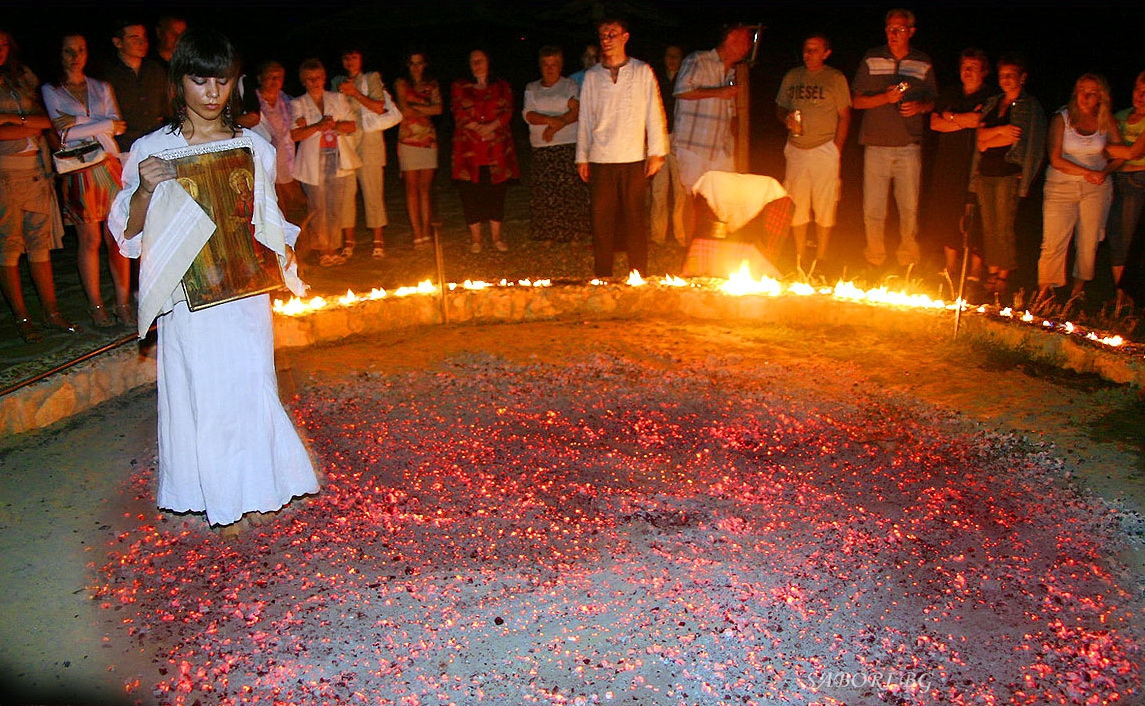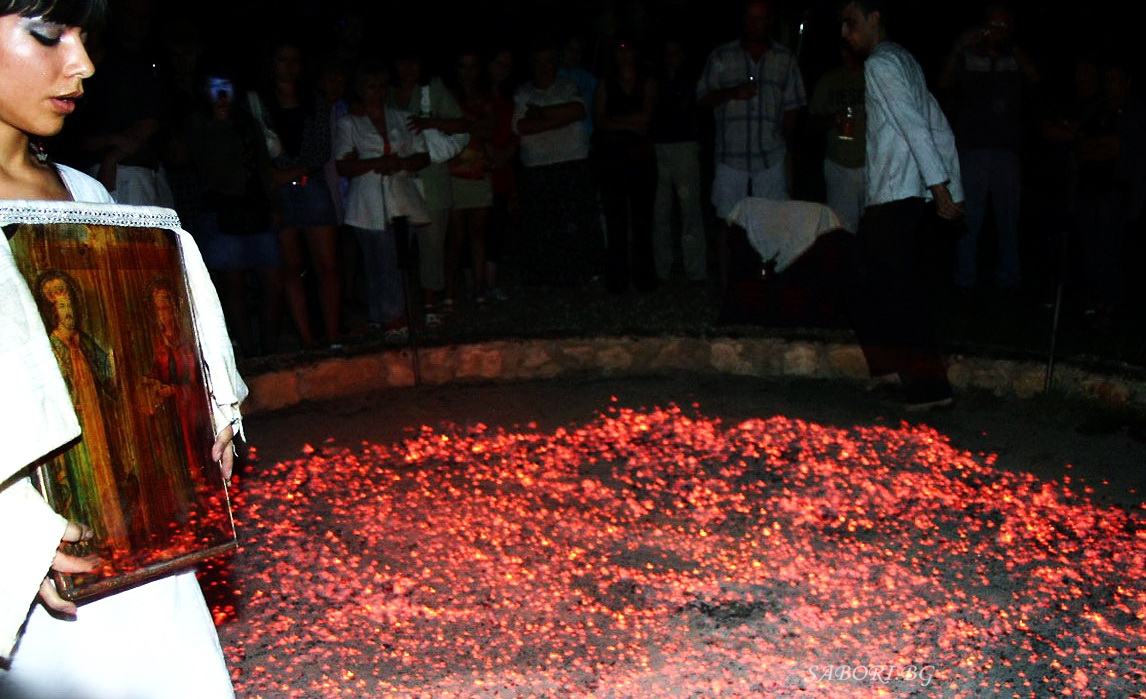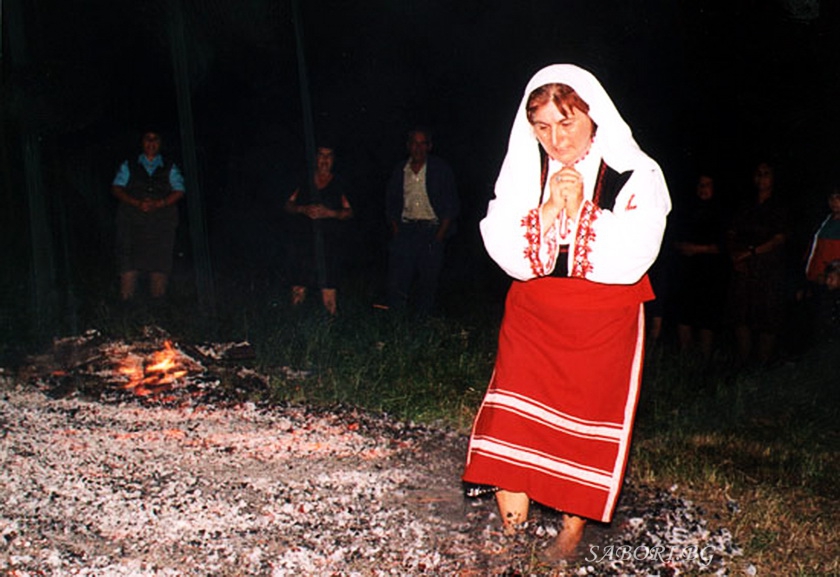| Фолклорни фестивали, събори и панаири | На софра с веселба | Литература и изкуство, изложби | Кино и театър | Религиозни и храмови празници | Музикални и танцови прояви | Плаващи празници |
Fire Dancing (Nestinarstvo)
Fire Dancing (Nestinarstvo)

The ritual is a unique mixture of Eastern Orthodox beliefs and older pagan traditions from the Strandzha Mountains.

|

|
In 2009, the ritual was included as a UNESCO World Heritage legacy of non-material culture.
According to a number of scholars, the ritual was performed by a Thracian cult that worshipped the sun.

|

|
Traditionally, the right to perform the ritual would be hereditary and the head nestinar may be succeeded only by his or her son or daughter, and only when he or she is too old or ill to continue performing it. The head nestinar's house is sacred, because it houses the stolnina (столнина) – a small chapel where icons of several saints are arranged, as well as a sacred drum used specifically for the ritual and believed to cure the drummer if he is ill.

|

|
The preparation of the fire for the dance starts before noon. The fire must be laid in a symmetrical circle, so that those in attendance can all observe the rite. Before evening, the fire dancers and a representative of the church go to a chapel that is dedicated to Saints Constantine and Elena, where they breathe deeply of the incense and pray before the icons. Later, after it gets dark, the whole village gathers at the chapel, including musicians – a gayda (Bulgarian goatskin bagpipe) player and a drummer.

|

|
In a trance, the fire dancers move into the circle of celebrants, and after the first dancer traverses the coals in the pattern of a cross, the other dancers enter the fiery circle. The movements that the dancers make on the burning coals are intricate and orderly, but nevertheless their bare feet are not burned. When the ritual dance concludes, all of those present again perform the Kostadin Horo, as a kind of prayer for good health.

|

|

At present, the tradition of fire dancing is observed most faithfully in the village of Bulgari in the Strandzha, and every year on June 3 visitors come to the village from all over the world to observe the rite.
If you’re able, and if you like our content and approach, please support the project. Our work wouldn’t be possible without your help:
Bank: Cibank JSC
BIC: BUIBBGSF
IBAN: BG22BUIB98881038432000
Recipient : Non-profit organisation “Bulgarian Holidays”
Sincerely yours,
Team Association www.SABORI.BG; Contacts Us: bgsabori@gmail.com
Bank: Cibank JSC
BIC: BUIBBGSF
IBAN: BG22BUIB98881038432000
Recipient : Non-profit organisation “Bulgarian Holidays”
Sincerely yours,
Team Association www.SABORI.BG; Contacts Us: bgsabori@gmail.com
Всички текстове и изображения в този сайт са под закрила на ЗАПСП. Използването, копирането и публикуването на част или цялото съдържание на сайта е забранено.









